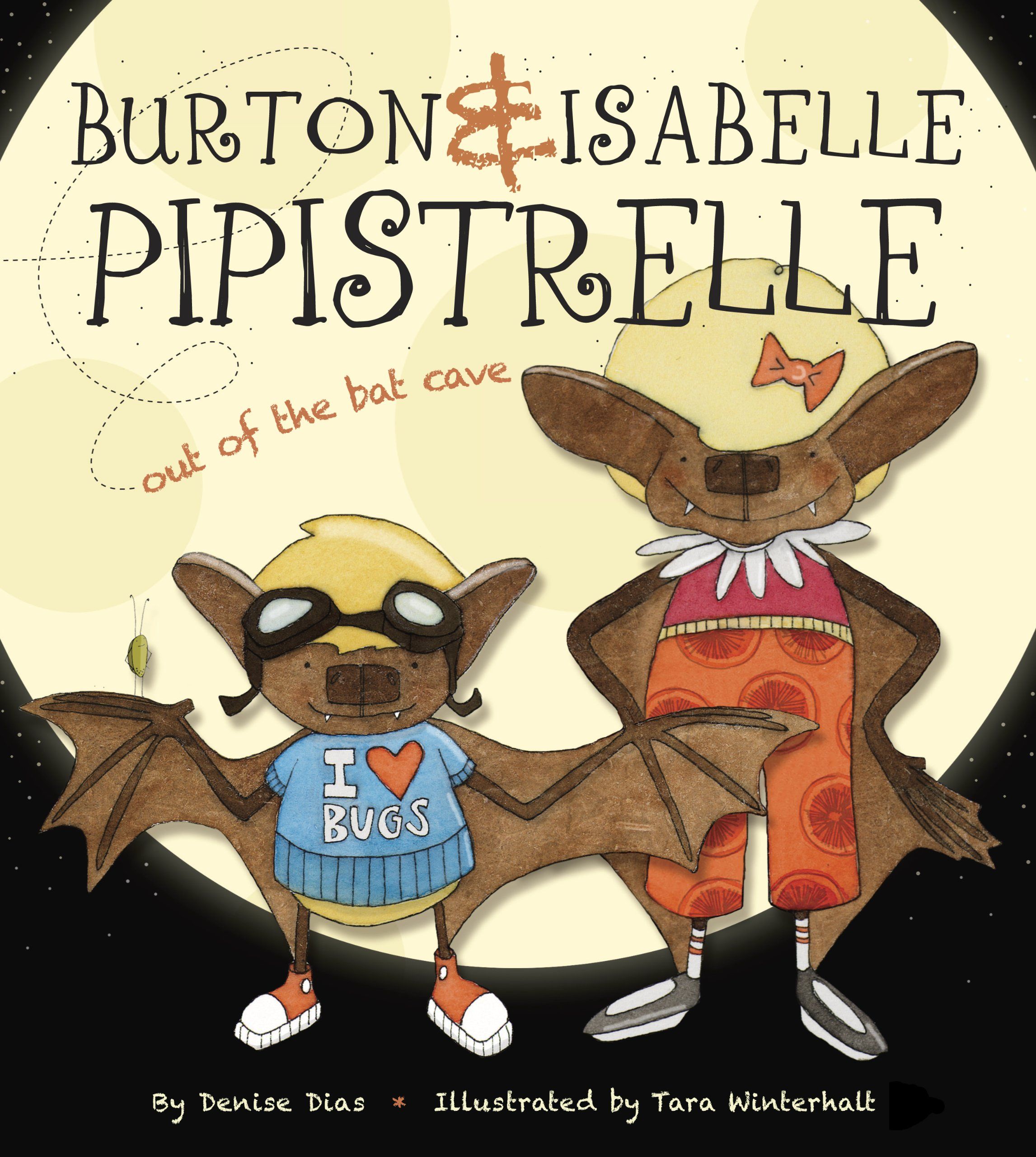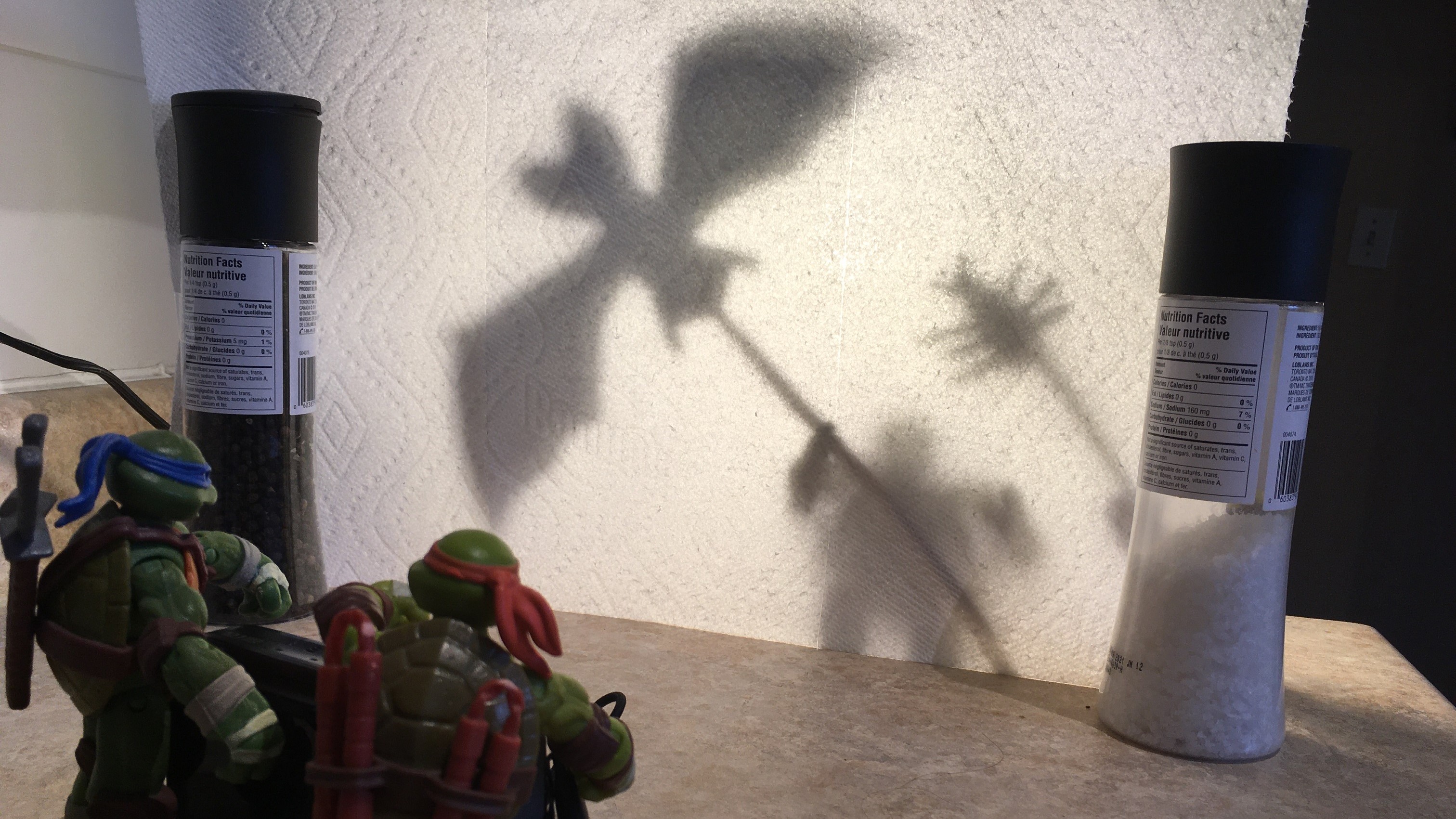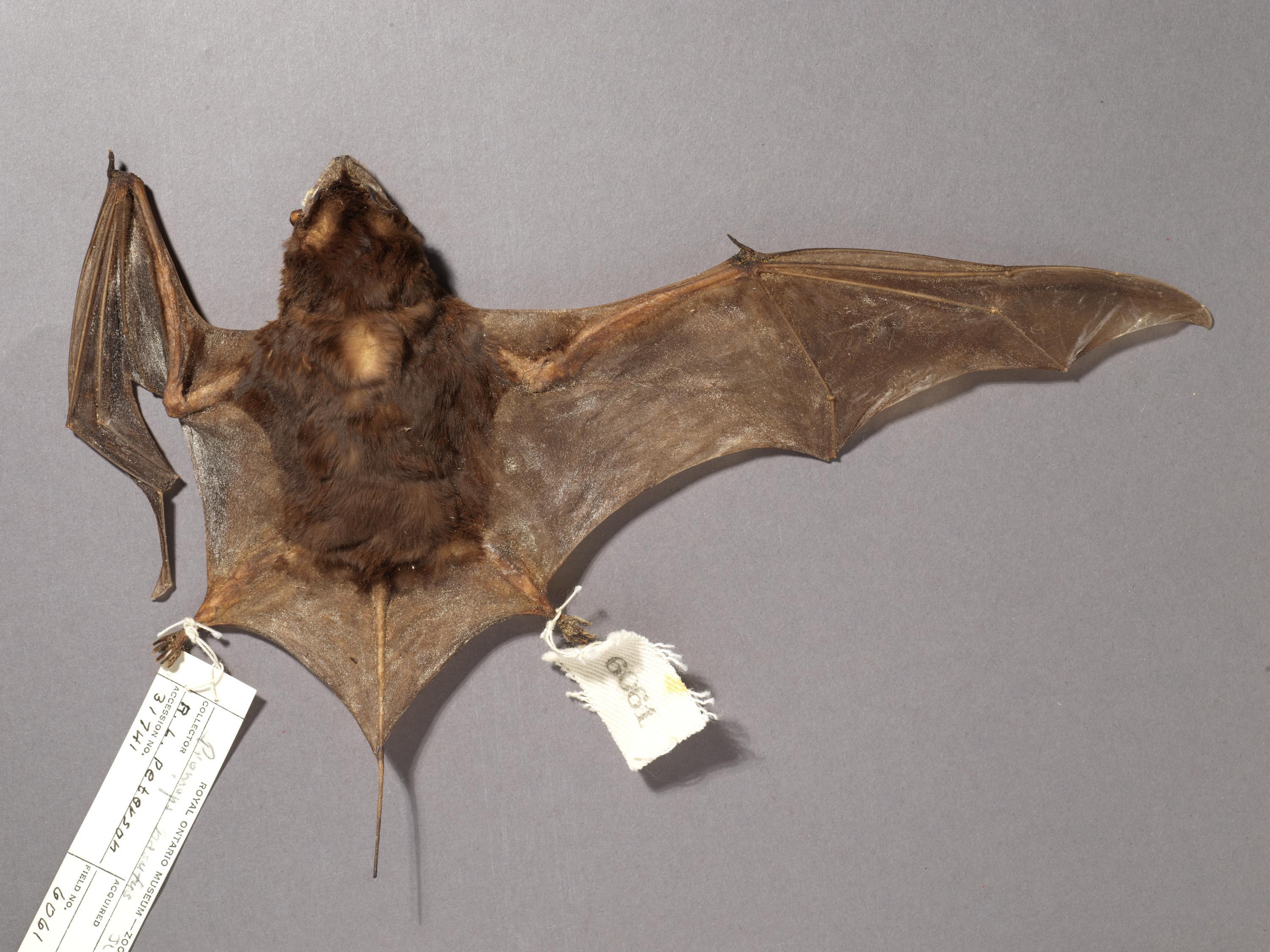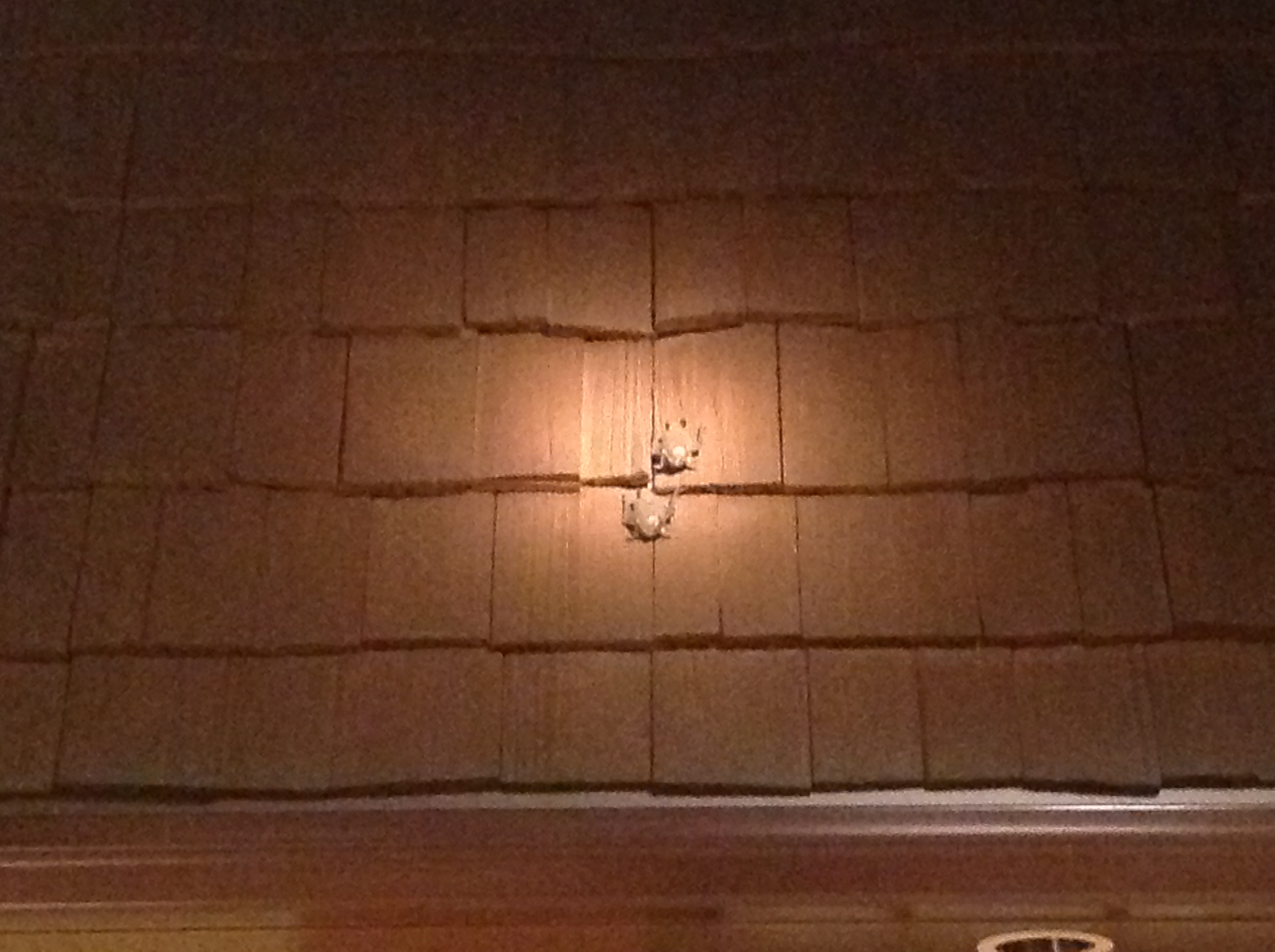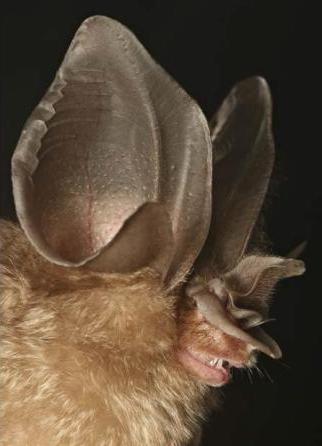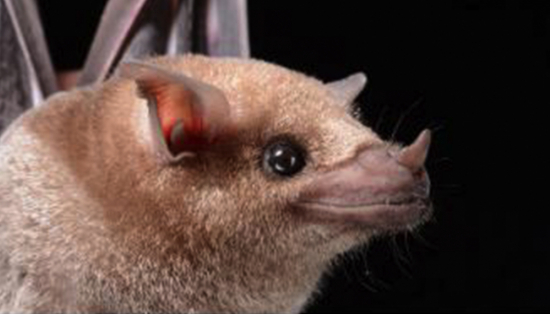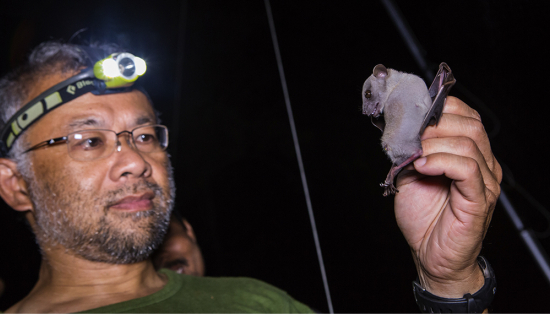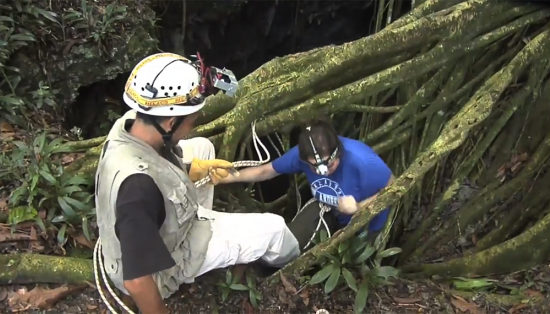Visit ROM Storytime for a discussion of children’s books for young learners with ROM educator Sarah Elliott.
This week, we explore Burton & Isabelle Pipistrelle: Out of the Bat Cave by Denise Dias, illustrated by Tara Winterhalt. Stay tuned after the story summary for a Q&A on how the story connects to ROM objects, and try a story-inspired creative activity.
For our creativity challenge this week, we’re letting Burton’s adventure through light, darkness, and echoes inspire us to tell our own stories using light, shadow, and sound in a shadow play!
Shadow plays most likely began to be performed in Central, East, and South Asia almost three thousand years ago, and their popularity spread around the world. Some of the finest shadow puppets can be incredibly detailed. Luckily, you don’t have to have an expert’s puppet to tell a story in a shadow play. You just need light, some kind of screen, and a little imagination!
- Figure out what story you want to tell. In our story this week, Burton had a big adventure, but Isabelle stayed home in the bat cave. Maybe you can tell a story about an adventure Isabelle has. Or maybe you have a different story you are itching to tell. It’s up to you!
- Once you know who is in your story, find or make the props and characters you need to act it out. We made ours out of a folder and a chopstick, but you can use anything that works for you, as long as light doesn’t pass through it. You can make puppets, use your toys, or even make shapes using your hands.
- Create your stage by placing a light behind your shadow puppets and a screen in front of them. The action figures in our example are using a paper towel between two salt and pepper grinders as a screen. A bedsheet stretched between two chairs works just as well!
- Act out your shadow play using your puppets. Remember, the closer to the screen they are, the better the shadow they will cast on the screen.
- Have someone on the other side of the screen record your shadow play for you.
- Share your shadow plays with us @ROMtoronto #ROMathome.
Why do bats sleep upside down?
Lots of reasons! First, for bats that live in caves, the floor of the cave is full of a lot of stuff — water, bugs, and poop — that you wouldn’t want to sleep in. That leaves the roof of the cave. If you look at the body of a bat, its wings are actually its hands. You can see the four finger bones, and the little thumb claw at the top! They’re great for flying, but not great for hanging on to things. Instead, the bat uses its back feet to hang on to the roof of the cave, so the bat hangs upside down.
Another important reason is that they need to take off that way so they can fly. Bat bones aren’t hollow like bird bones, which makes it really hard for them to take off from the ground like birds or insects do. To make up for it, they take off by dropping down from above.
Why are bats nocturnal?
Not all bats are nocturnal, some bats are out and about during the day, but most bats are active at night. There are fewer predators around after dark, and lots of bugs come out at night. These bugs are a great source of food for many bats, and it means they don’t have to compete for food with everything else that’s hunting during the day. One of Ontario’s little brown bats can eat a thousand mosquitoes a night, and sometimes more! That’s good news for humans, too.
How do bats get around at night?
Bats’ eyes work about as well as ours do in the dark — not well at all! To make up for this, bats usually have huge ears to help them hear the sounds they make to echolocate, which is when bats use high pitched sounds and echoes to paint a kind of sound-picture of the world around them. They can use echolocation to find their food and to keep an “ear” out for any predators like owls that might also be around.

